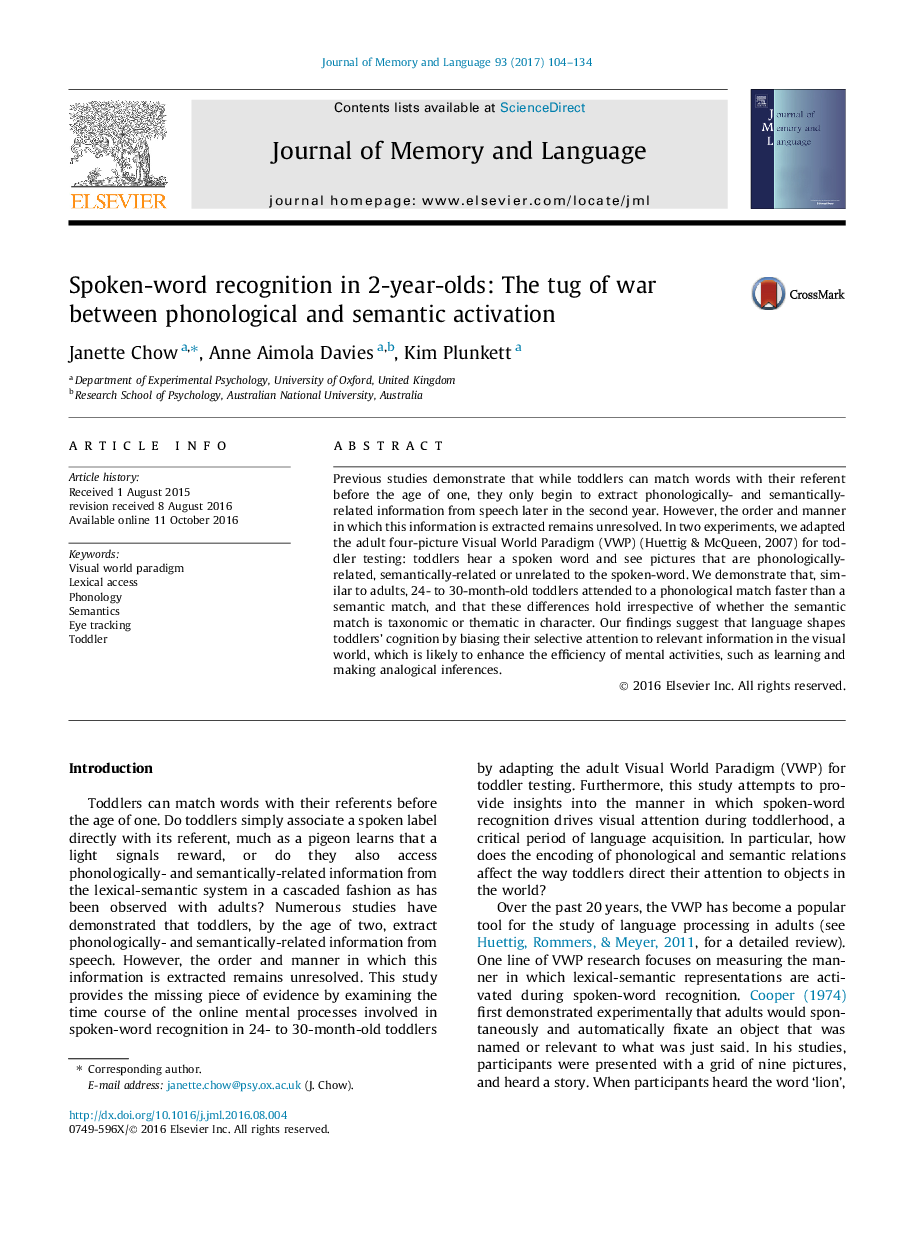| Article ID | Journal | Published Year | Pages | File Type |
|---|---|---|---|---|
| 5042540 | Journal of Memory and Language | 2017 | 31 Pages |
â¢We examined the mental processes involved in spoken-word recognition in toddlers.â¢The adult four-picture Visual World Paradigm was adapted for toddlers.â¢Toddlers attended to a phonological match sooner than a semantic (taxonomic or thematic) match.â¢Fixations to a phonological match were positively correlated with vocabulary size.â¢Language biases toddlers' attention to phonologically- and semantically-relevant visual information.
Previous studies demonstrate that while toddlers can match words with their referent before the age of one, they only begin to extract phonologically- and semantically-related information from speech later in the second year. However, the order and manner in which this information is extracted remains unresolved. In two experiments, we adapted the adult four-picture Visual World Paradigm (VWP) (Huettig & McQueen, 2007) for toddler testing: toddlers hear a spoken word and see pictures that are phonologically-related, semantically-related or unrelated to the spoken-word. We demonstrate that, similar to adults, 24- to 30-month-old toddlers attended to a phonological match faster than a semantic match, and that these differences hold irrespective of whether the semantic match is taxonomic or thematic in character. Our findings suggest that language shapes toddlers' cognition by biasing their selective attention to relevant information in the visual world, which is likely to enhance the efficiency of mental activities, such as learning and making analogical inferences.
